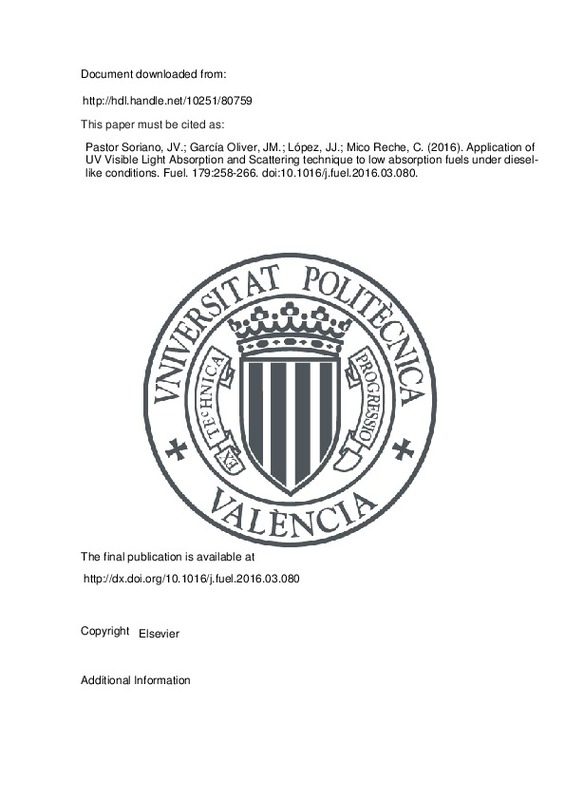JavaScript is disabled for your browser. Some features of this site may not work without it.
Buscar en RiuNet
Listar
Mi cuenta
Estadísticas
Ayuda RiuNet
Admin. UPV
Application of UV Visible Light Absorption and Scattering technique to low absorption fuels under diesel-like conditions
Mostrar el registro completo del ítem
Pastor Soriano, JV.; García Oliver, JM.; López, JJ.; Micó Reche, C. (2016). Application of UV Visible Light Absorption and Scattering technique to low absorption fuels under diesel-like conditions. Fuel. 179:258-266. https://doi.org/10.1016/j.fuel.2016.03.080
Por favor, use este identificador para citar o enlazar este ítem: http://hdl.handle.net/10251/80759
Ficheros en el ítem
Metadatos del ítem
| Título: | Application of UV Visible Light Absorption and Scattering technique to low absorption fuels under diesel-like conditions | |
| Autor: | ||
| Entidad UPV: |
|
|
| Fecha difusión: |
|
|
| Resumen: |
Light Absorption and Scattering technique (LAS) has been applied for the measurement of fuel vapour distribution
in diesel-type sprays. This technique is usually limited to fuels with relatively high absorptivity,
which ...[+]
|
|
| Palabras clave: |
|
|
| Derechos de uso: | Reserva de todos los derechos | |
| Fuente: |
|
|
| DOI: |
|
|
| Editorial: |
|
|
| Versión del editor: | http://dx.doi.org/10.1016/j.fuel.2016.03.080 | |
| Código del Proyecto: |
|
|
| Agradecimientos: |
This work was partially funded by the Government of Spain through Project TRA2011-26359 and Grant BES-2012-059721. In addition, the authors acknowledge that some equipment used in this work has been partially supported by ...[+]
|
|
| Tipo: |
|







![[Cerrado]](/themes/UPV/images/candado.png)


